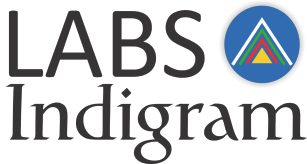Revolutionizing Fungal Pathogen Control: Ai-Genix's PathoShield Technology
Khalil Shaikh; Shahnaz Shaikh
7/3/20242 min read


PathoShield: A Novel Fungal Plant Pathogen Control Method
AI-Genix developed PathoShield, which uses THF-EMR as a non-chemical and non-biological method of controlling fungal plant pathogens. Here’s a detailed explanation of how PathoShield operates to manage and control fungal pathogens in plants:
Mechanism of Action
Electromagnetic Radiation:
PathoShield utilizes THF-EMR waves, which are specifically tuned to frequencies that are harmful to fungal pathogens.
These THF-EMR waves disrupt the cellular functions and structural integrity of fungal cells, leading to their inactivation or death.
Targeted Action:
The system is designed to specifically target and affect fungal pathogens without harming the plants.
The frequencies used are carefully selected to ensure that they have a detrimental effect on the fungi while being safe for the host plants.
Non-Thermal Effects:
Unlike other methods that might rely on heat or chemical reactions, PathoShield’s electromagnetic radiation works through non-thermal mechanisms.
This means that the fungal pathogens are controlled without raising the temperature of the treated area, avoiding potential thermal damage to plants.
Benefits of Using PathoShield
Safety and Environmental Impact:
PathoShield does not rely on chemical fungicides, making it a safer option for the environment, farm workers, and consumers.
It helps in reducing chemical residues on crops and minimizes the risk of developing fungicide-resistant strains of pathogens.
Sustainability:
The use of electromagnetic radiation is a sustainable approach to pathogen control, as it reduces the need for recurrent chemical applications.
It supports integrated pest management (IPM) strategies by providing an additional tool that can be used in conjunction with other sustainable practices.
Efficiency:
PathoShield provides rapid and effective control of fungal pathogens, ensuring that crops are protected throughout their growth cycle.
The system can be deployed as needed, offering flexibility in managing fungal outbreaks promptly.
Cost-Effective:
By reducing the reliance on chemical fungicides and the associated costs, PathoShield can be a cost-effective solution for farmers.
It helps lower the overall expenditure on plant protection while enhancing crop yield and quality.
Application in Agriculture
Field Crops:
PathoShield can be used to protect a variety of field crops from fungal diseases, including cereals, legumes, and vegetables.
It is particularly useful in managing soil-borne and foliar fungal pathogens that can cause significant yield losses.
Horticultural Crops:
The system is effective in horticultural settings, protecting fruit trees, vines, and ornamental plants from fungal infections.
It helps in maintaining the health and aesthetics of horticultural crops, which is crucial for marketability.
Greenhouse and Controlled Environments:
PathoShield is suitable for use in greenhouses and other controlled environment agriculture (CEA) systems, where fungal pathogens can spread rapidly due to the enclosed space.
It provides an effective solution for maintaining pathogen-free conditions in such settings.
Conclusion
PathoShield offers an innovative, non-chemical approach to controlling fungal plant pathogens using tremendously high-frequency electromagnetic radiation. This method is environmentally friendly, sustainable, and effective, making it a valuable tool for modern agriculture. By integrating PathoShield into pest management strategies, farmers can enhance crop protection, reduce reliance on chemical fungicides, and contribute to sustainable agricultural practices.
OUR ADDRESS
SH12 | Samarpan | Unique Garden | Beverly Park | Kanakia Layout | Mira Road (E) | Thane | Maharashtra - 401107 | India
CONTACT US
info@ai-genix.com
+91-22-3569 5818
WORKING HOURS
Mon - Fri: 10:00 - 19:00
Sat: 10:00 - 16:00
Sun: Closed
Supported & Funded By









